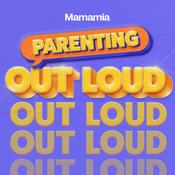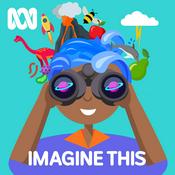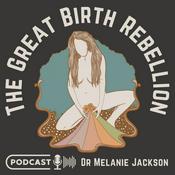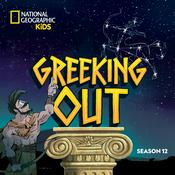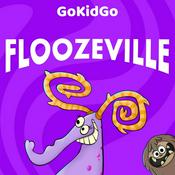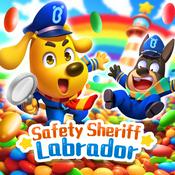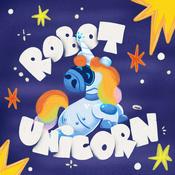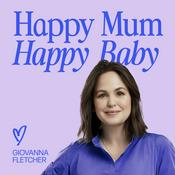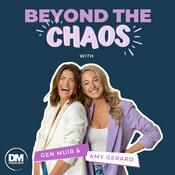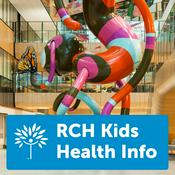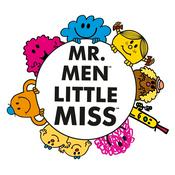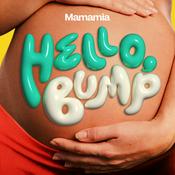Available Episodes
5 of 34
- Amazing animals – marine mammals with Dr Vanessa PirottaIt’s time to take a splash in the sea with five fun and fascinating fast facts about marine mammals, an interview with Dr Vanessa Pirotta, a wildlife scientist who knows a lot about whales, and there’s a warm-blooded blubber activity for you to try yourself at home. Presented by Jenny Lynch and Matilda Sercombe. Written and produced by Jenny Lynch. Music by Purple Planet Music. Sound effects by Pixabay. Creative Science: https://www.creativescience.com.au Facebook: @creativescienceaustralia Instagram: @creative_science_australia Episode content: 00:00 Introduction and fast facts 03:49 Dugongs and manatees 04:31 Interview with Dr Vanessa Pirotta 11:06 Blubber fingers activity Dr Vanessa Pirotta: https://www.vanessapirotta.com/ Books by Dr Vanessa Pirotta: ‘The Voyage of Whale and Calf’, ‘Oceans at Night’, ‘Humpback Highway’ Blubber fingers activity instructions: Marine mammals have lots of special adaptations to help them survive in the sea. One of these adaptations is whale blubber, which is a layer of fat that keeps warm-blooded whales warm in cold ocean water. You will need: a bowl, cold water from the fridge, ice cubes, two disposable gloves, a spoon, and some soft butter or margarine. If you don’t have any disposable gloves, try using two small plastic bags instead. This activity is pretty messy, so do it next to a sink, with soap and warm water ready for washing your hands at the end. Fill the bowl with cold water and add some ice cubes to the water to make it really cold. Scoop 2 big spoonfuls of soft butter or margarine into one of the disposable gloves and squeeze the butter or margarine down into the fingers of the glove, pushing any air bubbles out of the fingers. Put the other glove on one of your hands first. Put the glove filled with butter or margarine on your other hand and make sure your fingers are covered with the butter or margarine. Carefully place the fingers of both of your hands into the ice-cold water. Try to keep your fingers in the water for at least 2-minutes, but take them out of the water if they feel too cold. What do you notice? Your buttery fingers should last longer in the water because the butter is protecting your fingers from the icy cold water. Heat energy always moves from a warm object to a colder object and the butter is acting as an ‘insulator’ because it slows down the movement of heat energy out of your fingers. A lot of cold-climate animals have blubber. Seals, whales, and polar bears, all have a layer of blubber to stop them losing too much heat from their bodies.--------13:23
- Cutting edge technology – virtual reality with Dr Vanessa MossLet’s get immersed in a high-tech virtual world with five fascinating fast facts about virtual reality, an interview with Dr Vanessa Moss, an astrophysicist who uses virtual reality to collaborate with other scientists, and an eye-opening binocular activity for you to try yourself at home. Presented by Jenny Lynch and Matilda Sercombe. Written and produced by Jenny Lynch. Music by Purple Planet Music. Sound effects by Pixabay. Creative Science: https://www.creativescience.com.au Facebook: @creativescienceaustralia Instagram: @creative_science_australia Episode content: 00:00 Introduction and fast facts 04:05 Interview with Dr Vanessa Moss 10:33 Dominant eye activity Virtual science exhibition, The Future of Meetings TFOMxCSIRO Exhibition Hall NOTE: This virtual space uses quite a lot of data (100MB). The space is compatible with Safari, Chrome and Edge browsers (partial support for Firefox). It is also accessible via the Spatial.io phone app or Oculus Quest 2 (VR). https://www.spatial.io/s/TFOMxCSIRO-Exhibition-Hall-64a1609a2e4f7d91d95a43bd?share=9027864886891104356 Dominant eye activity instructions: The hand you use for writing is your ‘dominant hand’ and most of us are either left-hand dominant or right-hand dominant. A few people are ambidextrous, which means they can use one hand just as easily as the other. Did you know that you probably have a dominant eye as well as a dominant hand? Follow these steps to test which is your dominant eye. Stretch your arms out in front of you and use your fingers and thumbs to make a triangle shape that you can see through. Focus on an object in the distance and keep staring at it. Keep your arms stretched out, but slide your hands together to make the triangle smaller, while still looking at the distant object. Keep looking at the object, and close one of your eyes. If you can still see the object, the eye that is still open is your dominant eye. If you can’t close one eye at a time by winking, try asking someone to help you by carefully covering one of your eyes with their hand. If you can’t see the object, switch eyes, so the other eye is closed. If you can now see the object with your open eye, then this is your dominant eye. If it didn’t work, try again, or maybe you are one of the few people who does not have a dominant eye. As well as testing for your dominant eye, this activity demonstrates how each of your eyes sees a slightly different picture of your surroundings. Virtual reality relies on this binocular vision to create realistic images of three-dimensional worlds.--------13:06
- Spaced out science – space junk with Mars Buttfield-AddisonGet ready to launch into fascinating fast facts about space junk, an interview with Mars Buttfield-Addison, a computer scientist and science communicator who knows a lot about space debris, and an easy orbital activity for you to try yourself at home. Presented by Jenny Lynch and Matilda Sercombe. Written and produced by Jenny Lynch. Music by Purple Planet Music. Sound effects by Pixabay. Creative Science: https://www.creativescience.com.au Facebook: @creativescienceaustralia Instagram: @creative_science_australia Episode content: 00:00 Introduction and fast facts 03:28 A big collision in space 04:10 Interview with Mars Buttfield-Addison 10:49 Orbiting sock activity Orbiting sock activity instructions: You will need: a pair of long socks, for example, knee-high socks or football socks, or ask if you can borrow a pair of adult-sized socks. Roll up one of the socks and push it down into the other sock, so it is in the toe end of the sock. Make sure you have plenty of space around you before doing this step. Hold the open end of the sock and swing the sock around in a circle, so the rolled-up sock is orbiting your hand. Make the sock swing around in a circle as fast as you can, and then slow down the speed until the sock only just stays in a nice, round circle-shaped orbit. Hold the sock about halfway along the length, so the orbit is smaller. Swing the sock around again so it orbits your hand in a smaller circle. Make it swing around as fast as you can again, and then slow down the speed while keeping it in a circle-shaped orbit. What do you notice about the speed of the larger orbit compared to the smaller orbit? The sock can orbit a lot slower in the larger orbit compared to the smaller orbit. This is only a model made from socks, so the forces are a bit different compared to a real satellite orbiting Earth. In our sock model, the long sock is providing the force to keep the rolled-up sock in its orbit, so the long sock is a bit like gravity holding a satellite in orbit. A satellite is held in orbit by the force of gravity. For lower orbits, the force of gravity is stronger and a satellite in a lower orbit has to move faster to avoid falling down to Earth. Higher orbit satellites experience less gravitational pull, and they move more slowly to stay in orbit.--------13:07
- Mind blowing science - National Science WeekSaturday 9 August to Sunday 17 August 2025 is National Science Week in Australia, so it’s time to blow your mind with five fun and fascinating fast facts about different types of science, some mind-blowing recent discoveries in science, a few different voices sharing their favourite mind-blowing science, and an activity that’s oozing with science for you to try yourself at home. Presented by Jenny Lynch and Matilda Sercombe. Written and produced by Jenny Lynch. Music by Purple Planet Music. Sound effects by Pixabay. Creative Science: https://www.creativescience.com.au Facebook: @creativescienceaustralia Instagram: @creative_science_australia National Science Week Find free resources and National Science Week events happening near you: https://www.scienceweek.net.au/ DIY Science activities: https://www.scienceweek.net.au/diy-science/ See Creative Science live on stage at these Sydney events: Saturday 9 August 2025, Sydney Science Trail at the Australian Museum Sunday 10 August 2025, Science in the Scrub at Western Sydney Parklands Sunday 17 August 2025, Science in the Swamp at Centennial Park Thanks to Inspiring Australia NSW for helping us connect with special guests: Eylem Altuntas, Developmental Psychologist, Western Sydney University Jinx Moore, Medical Research Scientist, University of Technology Sydney Dr Patrick Capon, Science Communicator, Australian Red Cross Lifeblood Dr Alison Gould, Science Communicator, Australian Red Cross Lifeblood Kira Lowe, PhD Candidate, University of Wollongong Kenya Fernandes, Microbiologist, University of Sydney Alicia Haines, Forensic Biologist, University of Technology Sydney Episode content: 00:00 Introduction and fast facts 4:30 New discoveries in science 6:10 Special guests with mind blowing ideas 9:20 Elephant toothpaste activity Elephant toothpaste activity instructions: You will need: A measuring cup, some warm water, a small jug, a teaspoon of dry yeast, a small plastic drink bottle, some dishwashing liquid, and a few drops of food colouring. You will also need about 100 millilitres of 3% hydrogen peroxide. Ask an adult if you have any at home or you can find it at a pharmacy. Be careful when using the 3% hydrogen peroxide because it can stain clothes and other material, and you might like to wear gloves to protect your hands. This activity is pretty messy so you should do it on a tray next to the kitchen sink or in a sheltered outside area. Use the measuring cup to add about 50 millilitres of warm water to the small jug. Add one teaspoon of dry yeast to the warm water, stir it gently, and leave it to sit for 5 or 10 minutes to ‘activate’ the yeast. You will know when it’s ready because there will be bubbles on top of the water. While you’re waiting for the yeast mixture to bubble, use the measuring cup to add about 100 millilitres of 3% hydrogen peroxide to the plastic bottle. Add a big squirt of detergent and a few drops of food colouring to the bottle and swirl the bottle to mix the liquids. NOTE: If you want to make a video or take a photo of the Elephant Toothpaste reaction, get ready now before you do the next step, because the reaction will happen quickly. Pour the yeast mixture from the jug into the bottle, step back and see what happens. You should see bubbly foam oozing up and out of the bottle. The chemical formula for hydrogen peroxide is H2O2 and you might notice that it is made up of hydrogen and oxygen atoms, just like water, which has the chemical formula H2O. Hydrogen peroxide slowly breaks down to turn into water and oxygen gas. Yeast contains a chemical called ‘catalase’ which speeds up this reaction. The bubbles you see in the Elephant Toothpaste are bubbles of oxygen gas made by the hydrogen peroxide breaking down. Hydrogen peroxide can cause damage to the cells in living things, like us humans and the yeast used in this activity, so many living things make the chemical ‘catalase’ to get rid of hydrogen peroxide.--------12:29
- Ancient science – Aboriginal technology with Belinda HuntrissLet’s step back in time with five fascinating fast facts about how scientists date the ages of ancient artefacts, an interview with Belinda Huntriss, a Worimi woman who is passionate about sharing her knowledge of Aboriginal science and technology, and a tasty sedimentary layer activity for you to try yourself at home. Presented by Jenny Lynch and Matilda Sercombe. Written and produced by Jenny Lynch. Music by Purple Planet Music. Sound effects by Pixabay. Creative Science: https://www.creativescience.com.au Facebook: @creativescienceaustralia Instagram: @creative_science_australia Belinda Huntriss: https://freshwater-education.com/ Freshwater Education: Aboriginal education consultancy, professional development workshops, teaching resources, keynote speaker, educator mentoring Books mentioned by Belinda: Young Dark Emu – A Truer History by Bruce Pascoe The First Scientists by Corey Tutt Episode content: 00:00 Introduction and fast facts 04:07 Deep dive into the Madjedbebe rock shelter in Arnhem Land 05:28 Interview with Belinda Huntriss 12:24 Edible sedimentary layers activity Edible sedimentary layers activity instructions: You will need: a bowl, a few spoons, a glass or tumbler, 2 or 3 biscuits or cookies of your choice, custard or chocolate pudding, chopped fruit and sprinkles. Note: You don’t have to use all of these ingredients to make the sedimentary layers. You might have some tastier ideas you’d like to try. Place the biscuits or cookies on a chopping board or in a bowl and make biscuit crumbs by crushing the biscuits with the back of a large spoon. Make layers of the ingredients in the glass or tumbler, by adding the ingredients one layer at a time. Start by covering the bottom of the glass with biscuit crumbs. Add a layer of custard or pudding, a layer of chopped fruit and a few sprinkles. Repeat the layers, starting again with biscuit crumbs, and keep adding layers until you are happy with your sedimentary layer dessert. Use a small spoon to dig into the layers and eat your dessert. You can travel back in time to a few minutes ago when you added the first layer of biscuit crumbs! Sedimentary layers form when small pieces of rock, sand, and soil settle on top of each other. The layers can also include left over material from plants and animals. As more and more layers are buried, pressure and time causes solid rock to form, and this type of rock is called ‘sedimentary rock’.--------14:37
More Kids & Family podcasts
Trending Kids & Family podcasts
About Creative Science for Kids
Explore science facts, intriguing scientific discoveries, and hands-on activities to try yourself at home. The perfect way to spark an interest in science and to feed the minds of science-curious children aged 8 to 12 years. Jenny Lynch is a science show presenter, writer, and science kit inventor, with a knack for making complicated scientific ideas fun, fascinating, and easy to follow. Matilda Sercombe is a young presenter with a passion for sharing fast facts and posing intriguing questions.
Podcast websiteListen to Creative Science for Kids, Parenting Out Loud and many other podcasts from around the world with the radio.net app

Get the free radio.net app
- Stations and podcasts to bookmark
- Stream via Wi-Fi or Bluetooth
- Supports Carplay & Android Auto
- Many other app features
Get the free radio.net app
- Stations and podcasts to bookmark
- Stream via Wi-Fi or Bluetooth
- Supports Carplay & Android Auto
- Many other app features


Creative Science for Kids
Scan code,
download the app,
start listening.
download the app,
start listening.
